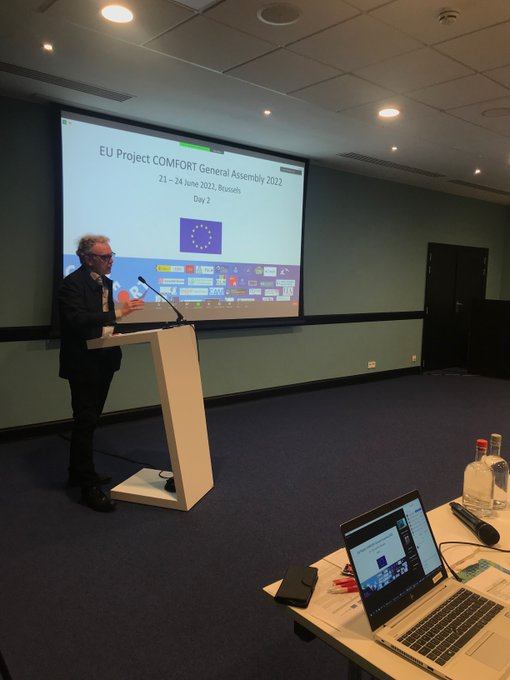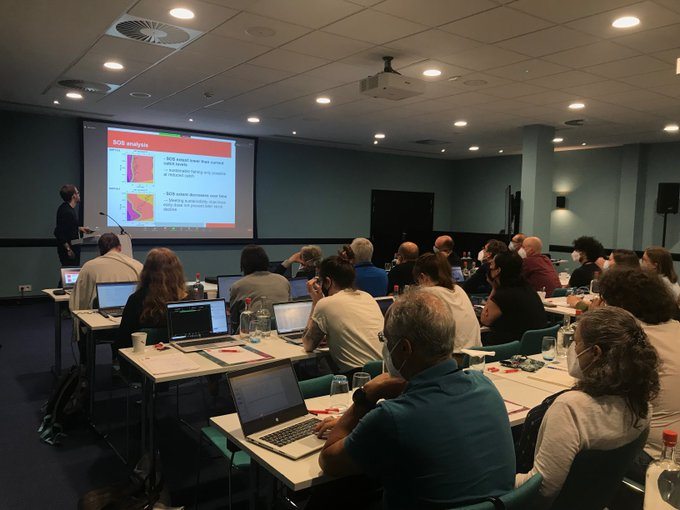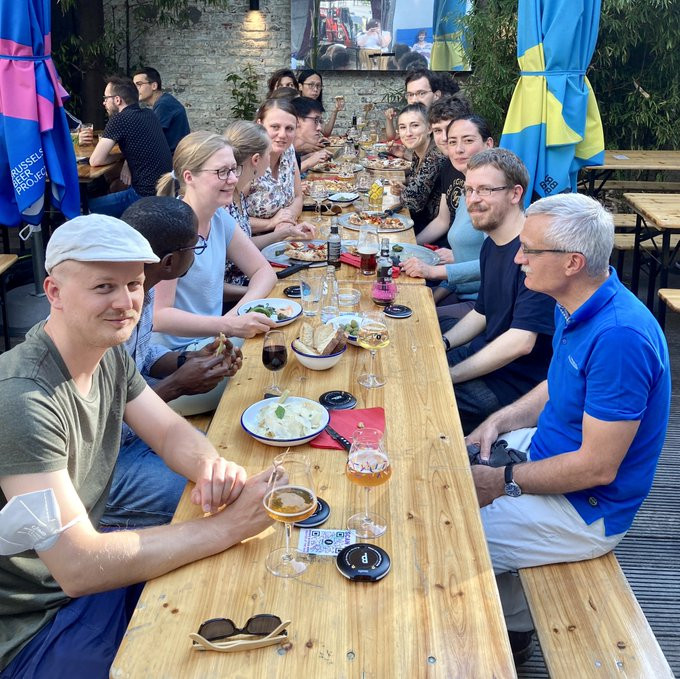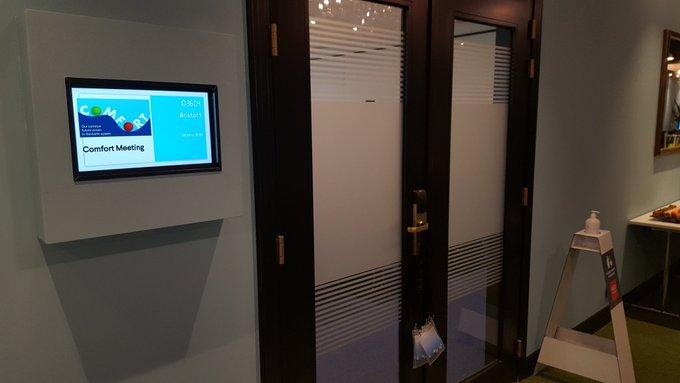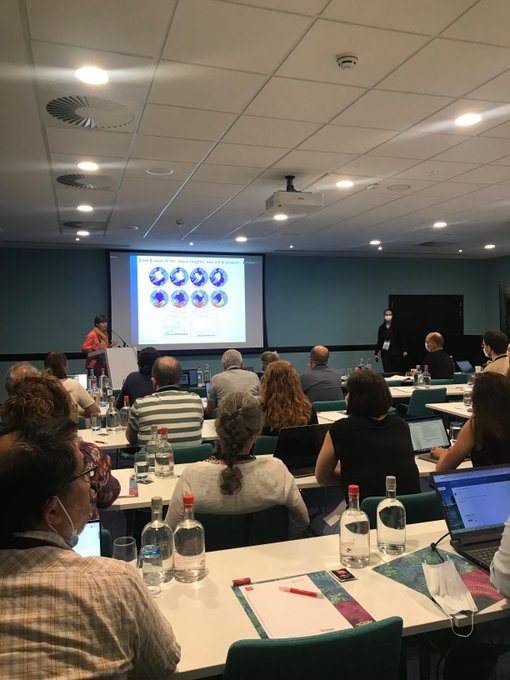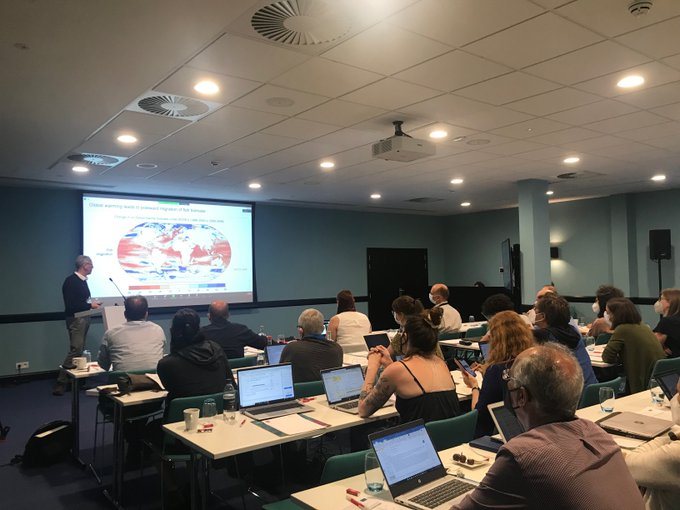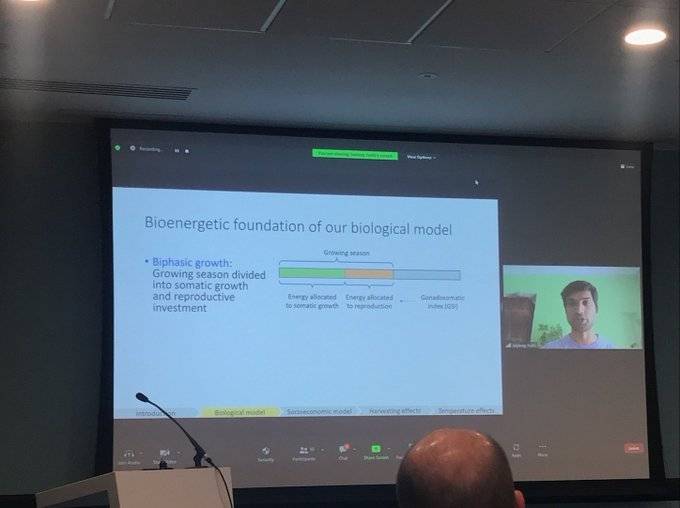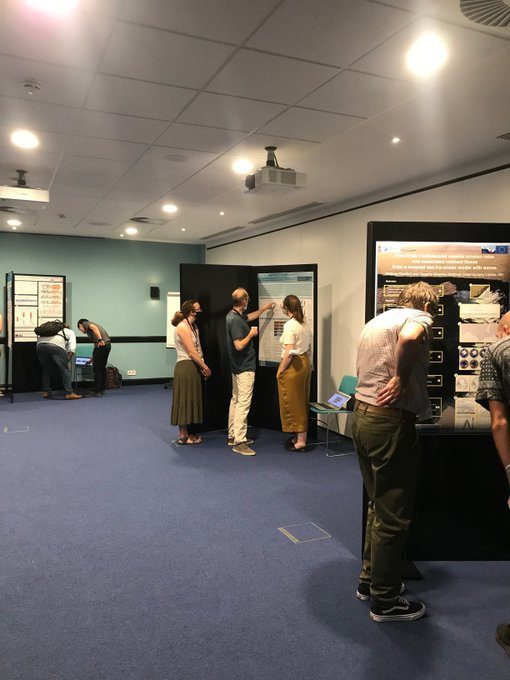Author: Dagmara Rusiecka
Destabilisation of the Subpolar North Atlantic prior to the Little Ice Age
Arellano-Nava, B., Halloran, P. R., Boulton, C. A., Scourse, J., Butler, P. G., Reynolds, D. J., & Lenton, T. M. (2022). Destabilisation of the Subpolar North Atlantic prior to the Little Ice Age. Nature Communications, 13(1), 5008. https://doi.org/10.1038/s41467-022-32653-x
Summary
The cooling transition into the Little Ice Age (a period of bitter winters and mild summers that affected Europe and North America between the 14th and 19th centuries) was the last notable shift in the climate system prior to anthropogenic global warming. It is hypothesised that sea-ice to ocean feedbacks sustained an initial cooling into the Little Ice Age by weakening the subpolar gyre circulation; a system that has been proposed to exhibit bistability (two stable states). Empirical evidence for bistability within this transition has however been lacking. Using statistical indicators of resilience in three annually-resolved clam shell proxy records from the North Icelandic shelf, the authors of this study show that the subpolar North Atlantic climate system destabilised during two episodes prior to the Little Ice Age. This loss of resilience indicates a reduced attraction to one stable state, and a system vulnerable to an abrupt transition. The two episodes preceded wider subpolar North Atlantic change, consistent with subpolar gyre destabilisation and the approach of a tipping point, potentially heralding the transition to Little Ice Age conditions.
Compound marine heatwaves and ocean acidity extremes
Burger, F. A., Terhaar, J., & Frölicher, T. L. (2022). Compound marine heatwaves and ocean acidity extremes. Nature Communications, 13(1), 4722. https://doi.org/10.1038/s41467-022-32120-7
Summary
Compound MHW-OAX events, during which marine heatwaves (MHWs) co-occur with ocean acidity extreme (OAX) events, can have larger impacts on marine ecosystems than the individual extremes. Using monthly open-ocean observations over the period 1982–2019, this study shows that globally 1.8 in 100 months (or about one out of five present-day MHW months) are compound MHW-OAX event months under a present-day baseline, almost twice as many as expected for 90th percentile extreme event exceedances if MHWs and OAX events were statistically independent. Compound MHW-OAX events are most likely in the subtropics and less likely in the equatorial Pacific and the mid-to-high latitudes. Additionally, the projected long-term mean warming and acidification trends have the largest effect on the number of MHW-OAX days per year, increasing it from 12 to 265 days per year at 2 °C global warming relative to a fixed pre-industrial baseline. Even when long-term trends are removed, an increase in [H+] variability leads to a 60% increase in the number of MHW-OAX days under 2 °C global warming. These projected increases may cause severe impacts on marine ecosystems.
Policy relevant message
The projected long-term mean warming and acidification trends have the largest effect on the number of marine heatwaves ocean acidity extreme days (MHW-OAX) per year, increasing it from 12 to 265 days per year at 2 °C global warming relative to a fixed pre-industrial baseline. Even when long-term trends are removed, an increase in [H+] variability (acidification) leads to a 60% increase in the number of MHW-OAX days under 2 °C global warming. These projected increases may cause severe impacts on marine ecosystems.
Contrasting projections of the ENSO-driven CO2 flux variability in the equatorial Pacific under high-warming scenario
Vaittinada Ayar, P., Bopp, L., Christian, J. R., Ilyina, T., Krasting, J. P., Séférian, R., Tsujino, H., Watanabe, M., Yool, A., & Tjiputra, J. (2022). Contrasting projections of the ENSO-driven CO2 flux variability in the equatorial Pacific under high-warming scenario. Earth System Dynamics, 13(3), 1097–1118. https://doi.org/10.5194/esd-13-1097-2022
Summary
The El Niño–Southern Oscillation is the main driver for the natural variability of global atmospheric CO2. It modulates the CO2 fluxes in the tropical Pacific with anomalous CO2 influx during El Niño and outflux during La Niña. This relationship is projected to reverse by half of Earth system models studied here under the business-as-usual scenario. This study shows models that simulate a positive bias in surface carbonate concentrations simulate a shift in the ENSO–CO2 flux relationship.
Annual Meeting, Brussels, 21-24 of June 2022
General Assembly 2022
On 21-24th June 2022, we finally had the pleasure to host our annual meeting in person in Brussels! Through modern technology, we could also connect with remote participants, which enabled the most inclusive result. Although a very late start in organisation due to unstable COVID-19 pandemic situation in Europe, the vast majority of venues being fully booked, multiple organisation challenges, Amsterdam Schiphol airport madness, Belgian public transport strike on Monday 20th of June and Brussels airport closure leading to multiple flight cancellations, the EU Advisor mandatory COVID-19 quarantine, the coordinator’s car broken down on the way to Brussels, we can safely say that.. the meeting was a great success!
Despite all the challenges, we had 3,5 days filled with state-of-the-art science conducted in WP1-6 in WP overview and scientific highlights, ECS talks, a poster session, and a region-oriented session cross-cutting through all scientific WPs. Apart from multiple scientific sessions, we also had a fantastic exchange and valuable input with the International Advisory Board and Stakeholder Reference Group providing an external point of view and knowledge. The diverse scientific expertise resulted in interesting and truly stimulating discussions. During the 3.5-day meeting, we could make key decisions on the work plan for the final months of the project.
The final meeting preparations are underway so stay tuned!
Abruptly attenuated carbon sequestration with Weddell Sea dense waters by 2100
Nissen, C., Timmermann, R., Hoppema, M., Gürses, Ö., & Hauck, J. (2022). Abruptly attenuated carbon sequestration with Weddell Sea dense waters by 2100. Nature Communications, 13(1), 3402. https://doi.org/10.1038/s41467-022-30671-3
Summary
Antarctic Bottom Water formation, such as in the Weddell Sea in the Southern Ocean, is an efficient vector for carbon sequestration on time scales of centuries. Possible changes in carbon sequestration under changing environmental conditions are unquantified to date, mainly due to difficulties in simulating the relevant processes on high-latitude continental shelves. The authors of this study use a model setup including both ice-shelf cavities and oceanic carbon cycling and demonstrate that by 2100, deep-ocean carbon accumulation in the southern Weddell Sea is abruptly attenuated to only 40% of the 1990s rate in a high-emission scenario, while the rate in the 2050s and 2080s is still 2.5-fold and 4-fold higher, respectively, than in the 1990s. Assessing deep-ocean carbon budgets and water mass transformations, this decline was attributed to an increased presence of modified Warm Deep Water on the southern Weddell Sea continental shelf, a 16% reduction in sea-ice formation, and a 79% increase in ice-shelf basal melt. Altogether, these changes lower the density and volume of newly formed bottom waters and reduce the associated carbon transport to the abyss.
Policy relevant message:
Under the high emissions scenario, carbon sequestration by Weddell Sea dense water formation will reduce by 40% by 2100.
Science-2-Policy workshop on tipping points in the Earth Systems
Three EU-funded projects under the Horizon 2020 programme, Tipping Points in the Earth System (TiPES), Our Common Future Ocean in the Earth System (COMFORT), and Tipping Points in Antarctic Climate Components (TiPACCs) have worked together towards developing a policy brief that presents the key findings to date from these projects. On that basis, we jointly formulated persisting knowledge gaps as well as policy recommendations.
The projects are hosted by The University of Copenhagen, The University of Bergen and NORCE and involve Bjerknes Centre for Climate Research.
Why us three?
We are the three projects funded under LC-CLA-08-2018 – Addressing knowledge gaps in climate science, in support of IPCC reports specifically H2020-LC-CLA-2018-2. We all deal with ‘tipping points’ in various areas and with different methods, but together we provide a comprehensive overview of the global tipping points system.
Main highlights:
- A special report focussing on tipping points in the IPCC context is urgently needed to synthesise existing knowledge across the different scientific communities and inform policy makers and the general public about the risks of crossing tipping points in response to anthropogenic climate change.
- Urgent implementation of a drastic reduction of GHG emissions, which are the primary cause of global warming and ocean acidification, in order to avoid further stability loss of major Earth system tipping elements and long-lasting changes in ocean properties.
- Reduction of deforestation rates in both tropical and boreal forests alongside efforts toward binding international agreements to limit land-use change to sustainable levels. A global satellite-based monitoring system should also be implemented to assess the health of terrestrial ecosystems. At the same time, large-scale ecosystem protection and reforestation will help reduce atmospheric greenhouse gas concentrations globally and reduce drought risk regionally.
- Appropriate global resource management needs to be implemented to achieve GHG emission reductions in line with the Paris Agreement, and to avoid problematic path dependencies and lock-in situations. Human societies must engage in the transformation towards i) green energy production, ii) sustainable exploitation and food production both on land and in the ocean, and iii) climate-friendly land use and urban planning and development.
- Climate-neutral transformations need to be achieved urgently: there is already progress underway, such as the notable European Union Green Deal, including the goal to become climate neutral by 2050 supported by the ‘Restore our Ocean and Waters by 2030’ Mission, as well as the European Climate Pact. However, it is critical that these processes are accelerated to prevent the cumulative and compounding negative societal and Earth system impact.

Download the policy brief summarising findings of all three tipping point projects here.
 TiPES, COMFORT, TiPACCs projects have received funding from the European Union’s Horizon 2020 research and innovation programme LC-CLA-08-2018: Addressing knowledge gaps in climate science, in support of IPCC reports under grant agreement No. 820970 (TiPES), 820989 (COMFORT), 820575 (TiPACCs). The work reflects only the author’s/authors’ view; the European Commission and its executive agency are not responsible for any use that may be made of the information the work contains.
TiPES, COMFORT, TiPACCs projects have received funding from the European Union’s Horizon 2020 research and innovation programme LC-CLA-08-2018: Addressing knowledge gaps in climate science, in support of IPCC reports under grant agreement No. 820970 (TiPES), 820989 (COMFORT), 820575 (TiPACCs). The work reflects only the author’s/authors’ view; the European Commission and its executive agency are not responsible for any use that may be made of the information the work contains.Strong Habitat Compression by Extreme Shoaling Events of Hypoxic Waters in the Eastern Pacific
Köhn, E. E., Münnich, M., Vogt, M., Desmet, F., & Gruber, N. (2022). Strong Habitat Compression by Extreme Shoaling Events of Hypoxic Waters in the Eastern Pacific. Journal of Geophysical Research: Oceans, 127(6), e2022JC018429. https://doi.org/10.1029/2022JC018429
Summary
The global ocean is currently losing oxygen. Consequently, marine organisms that require oxygen are increasingly confined to the well-oxygenated surface ocean above the gradually shoaling sub-surface “hypoxic” waters, that is, waters with insufficiently low oxygen concentrations. On top of this long-term trend, internal variability causes the hypoxic waters to intermittently shoal and induce Transient Habitat Reduction Extreme Events (THREEs). THREEs may change biogeochemical processes or alter entire ecosystem structures for weeks to months. To investigate when and where THREEs occur, a simulation of the Eastern Pacific (EP) from 1979 to 2016 was performed. The authors find that EP THREEs are mainly associated with the El Niño-Southern Oscillation, the seasonal cycle, and mesoscale eddies. At low latitudes, THREEs compress the habitat by up to 50%–70% (locally over 80%). Furthermore, 71% of THREEs go along with a shoaling of waters with extremely low pH conditions. Hence, during these THREEs marine organisms face compounding extremes. This study establishes a basis for studying the effects of THREEs in the open ocean. THREEs can provide a window into the future, as the long-term oxygen loss might transform current “extreme” conditions into the future normal state.
Policy relevant message
At low latitudes, Transient Habitat Reduction Extreme Events (THREEs) compress the habitat by up to 50%–70% (locally over 80%). Furthermore, 71% of THREEs go along with a shoaling of waters with extremely low pH conditions. Hence, during these THREEs marine organisms face compounding extremes.
The Pan-Arctic Continental Slope as an Intensifying Conveyer Belt for Nutrients in the Central Arctic Ocean (1985–2015)
Oziel, L., Schourup-Kristensen, V., Wekerle, C., & Hauck, J. (2022). The Pan-Arctic Continental Slope as an Intensifying Conveyer Belt for Nutrients in the Central Arctic Ocean (1985–2015). Global Biogeochemical Cycles, 36(6), e2021GB007268. https://doi.org/10.1029/2021GB007268
Summary
Microscopic algae called phytoplankton are the base of the trophic chain, sustaining the entire Arctic Ocean (AO) ecosystem. In the central parts of the AO, multi-year sea-ice used to limit transmission of light in the surface ocean and therefore control phytoplankton growth and primary productivity. However, the massive loss in sea-ice during the last 3 decades allowed more and more light to penetrate the water column, making nutrient availability the main bottom-up control of the AO productivity. A major part of the bio-available nutrients reaching the surface in the central AO are transported with ocean currents from the adjacent North Atlantic and Pacific and from deeper water masses. Using a biogeochemical model resolving processes at high spatial resolution, we were able to quantify the different transport pathways of nutrients with ocean currents and revealed that despite increasing supply along the anticlockwise flowing boundary current, the central AO is still running into more severe nutrient limitation.
Policy relevant message:
The continental slope contributes to the transport of nutrients in the Arctic Ocean. Yet, despite an intensification of ocean dynamics, the Arctic Ocean is still shifting from a light-limited to a nutrient-limited system.
Dagmara Rusiecka is the EU Climate Pact Ambassador in Norway representing COMFORT
 The European Climate Pact unites people around a common cause to build a sustainable Europe for us all and all the generations to come. The Climate Pact initiative was launched by the European Commission as part of the European Green Deal in support of the EU’s goal to be the first climate-neutral continent in the world by 2050.
The European Climate Pact unites people around a common cause to build a sustainable Europe for us all and all the generations to come. The Climate Pact initiative was launched by the European Commission as part of the European Green Deal in support of the EU’s goal to be the first climate-neutral continent in the world by 2050.
The European Climate Pact Ambassadors are people passionate about climate action, eager to make an impact and prevent climate change through various activities in their networks and local communities. Recently, Dagmara has become the European Climate Pact Ambassador representing COMFORT, the University of Bergen and Norway. Dagmara’s overarching goal is to directly translate Ocean and climate change scientific knowledge into political and societal action through two-way communication with policy makers and citizens. Oceans produce 50% of our oxygen, regulate weather and climate, and thus protecting it is a matter of global urgency. As a Climate Ambassador, her mission is to enhance the awareness of the Ocean’s role in climate regulation, the impacts of climate change on the Ocean and sustainable solutions to protect it.
